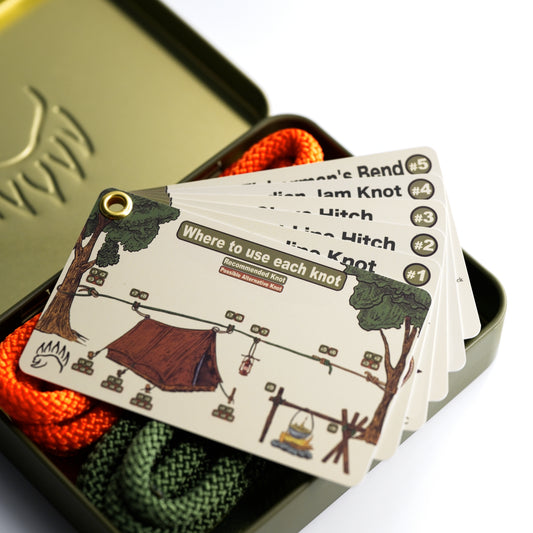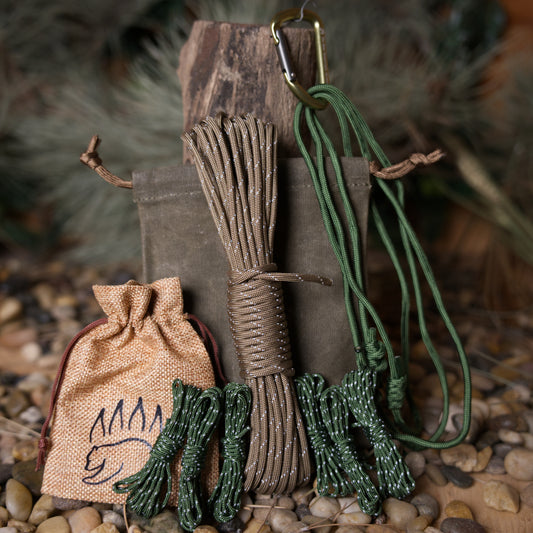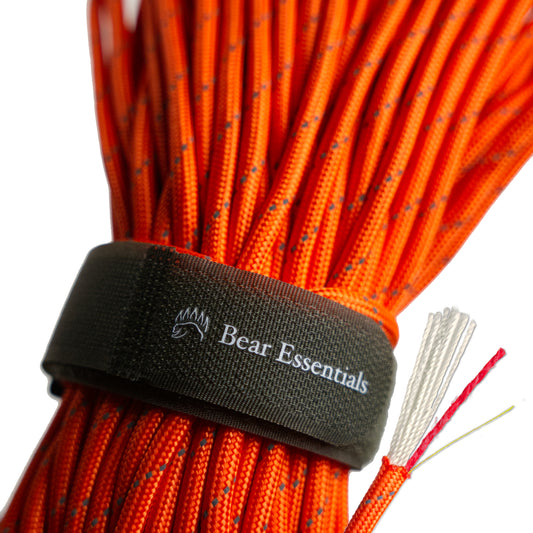How to Tie the Surgeon’s End Loop
Usage
The Surgeon’s End Loop is commonly used to create a fixed loop at the end of a rope or line, particularly in fishing for attaching lures or hooks and in camping for securing gear. It offers greater strength and stability than the Bowline, making it ideal for fixed anchoring tasks.
Why Learn the Surgeon’s End Loop?
Its robust design ensures a strong, fixed loop. This knot is a practical choice for anglers and campers needing secure anchoring points.
Common Uses
-
Fishing:
- Creates a loop for attaching lures, hooks, or swivels.
- Secures leader lines to main fishing lines.
-
Utility:
- Forms loops for anchoring ropes in household tasks.
- Secures cords for temporary setups in workshops.
-
Camping:
- Ties loops for securing tarps or tent guylines.
- Anchors gear or ropes for shelter setups.
ABOK Number
(Ashley Book of Knots)
Other Names
Category
|
Notable Features
- High Strength: Provides a secure loop for moderate to heavy loads.
- Easy to Tie: Simple overhand knot structure, quick to learn.
- Versatile Use: Suits fishing, camping, and utility anchoring tasks.
- Stable Loop: Maintains shape under tension, ideal for fixed connections.
- Reliable Grip: Holds well in wet or slippery conditions.
Variations
No true variations are listed in the provided knot index. For added security, an extra wrap can be added to form a triple overhand knot, though this increases bulk.
Similar Knots
Bowline vs. Surgeon’s End Loop
- Pros: Easier to untie after loading, quicker to tie.
- Cons: Less secure under heavy or cyclic loads compared to the Surgeon’s End Loop.
Perfection Loop vs. Surgeon’s End Loop
- Pros: Sleeker and more streamlined for fishing applications.
- Cons: More complex to tie and less forgiving with thicker ropes.
History
The Surgeon’s End Loop, referenced in The Ashley Book of Knots (#1017), likely originated in medical contexts where surgeons used similar knots for suturing, adapted for creating secure loops in ropes and lines. Its strength and simplicity made it popular in fishing for attaching tackle and in camping for anchoring. Its reliability in wet conditions has cemented its place in outdoor and utility applications.
Security Level
The Surgeon’s End Loop is highly reliable for creating fixed loops under moderate to heavy loads, particularly in fishing and camping, offering greater strength than the Bowline. It holds well when tied correctly but may jam after prolonged or heavy tension, making untying difficult. For slippery lines or critical tasks, ensure proper tightening and consider a stopper knot on the tag end.
Downsides
- Bulky profile: Larger than sleeker loop knots like the Perfection Loop.
- Jamming risk: Can be hard to untie after heavy loads, especially with thin lines.
Structure
- Double the end of the rope to form a bight, leaving enough length for the desired loop size.
- Tie a double overhand knot with the bight by looping it around the standing part twice.
- Pass the bight through the loop created by the overhand knot.
- Pull the standing part and the bight to tighten the knot, ensuring the loop is secure.
- Adjust the loop size and trim the tag end if necessary, checking for slippage.
Pro Tip: Wet the knot before tightening to reduce friction, especially for fishing lines.
FAQ
Is the Surgeon’s End Loop strong enough for heavy loads?
Yes, it’s reliable for moderate to heavy loads in fishing or camping, but test thoroughly first.
What lines work best for the Surgeon’s End Loop?
Monofilament, fluorocarbon, or medium-diameter ropes ensure strength and stability.
How does the Surgeon’s End Loop compare to the Bowline?
It’s more secure under load but bulkier and harder to untie.
Can the Surgeon’s End Loop be used for climbing?
No, it’s not suitable for climbing or life-support applications; use climbing-specific knots instead.
Why choose the Surgeon’s End Loop over the Perfection Loop?
It’s easier to tie and more versatile for thicker ropes, though less streamlined for fishing.
Important Notes on Safety
Common failure points include improper tightening or using mismatched rope types, which can cause slipping. Always verify the knot is used for appropriate tasks and correctly tied.
Inspect ropes or lines for wear or damage before tying.
Wet the knot before tightening to reduce friction and ensure security.
Practice tying in low-risk settings to ensure proficiency.









